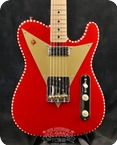Gibson / 1968 B-25N / 1968 / Guitar
Product Details
________________________________
Gibson's masterpiece used by Japanese famous artists
Gibson / 1968 B-25N
Small body model representing Gibson
The beginning of the L-1 appears 120 years ago and in 1902.
In 1932, the L-00, the prototype of the B-25, was announced.
In 1942, model changed from L-00 to LG-2 (Sunburst) LG-3 (natural).
In 1962, the LG-2 was named B-25 and the LG-3 was B-25 Natural in 1963.
The difference in the model name is divided by the presence or absence of coloring and the grade of the wood.
This feature is the same as the relationship between the J-45 and the J-50, and the natural top spruce was costly because of the choice of nodes.
Since the B-25 in 1962 appeared, variations in color have increased.
Natural, Sunburst, Cherry Sunburst (used in LG-2 in 1961), black, brown, red, and options between 1967 and 1969.
The specifications are the same as the traditional flat top of Sprestop, Mahogany and Gibson.
In terms of sound, the j-45 and J-50 are familiar with the familiar medium range, and while the small and 2 inches of about 2 inches are settled down, the low-pitched components are settled. Because it uses racing, it is an impression that gibson -like is more outstanding.
Since it reacts firmly to the player play, it shows its true value with strong picking such as strokes and cutting, which is a bit weak in ballad arpeggios.
Even if you play it strongly, there is no extra low mid, so it does not interfere with the vocal, and even if it is mixed with the ensemble, it is difficult to wear the base band. " I recommend it.
60 years after birth, the shadows are a little thin compared to the J-45 and J-50, but in Japan, the famous artists such as Tamio Okuda, Tortoise Matsumoto, Sugashikao, Masahiko Shimura, Gen Hoshino, Kana Uemura, etc. are B-22. The B-25 is a guitar that is so attractive that you can't talk about the Sub of J-45.
Our individual also has the characteristics of Gibson in the 60's, and the low frequencies that do not saturate are impressive.
It is a sound that is a little fresher than a crispy, and matches the moist atmosphere.
It is also interesting that the serial stamp on the back of the head has been hit twice. It may be that there was something irregular at the production stage.
The pickguard logo that tends to disappear is also beautiful, and the best condition that does not seem to have passed nearly 60 years.
The condition of the neck and Kibe is inspected and adjusted by an acoustic guitar professional, and all parts are good.
In addition, the neck is adjusted straight and has no vibration or clogged sound, and the string height on the 12th fret is set to 2.5 mm on the 6th string side and 2.0 mm on the first string side.
[SPEC.]
TOP: Solid Spruce
Back/Sides: Solid Mahogany
Neck: Mahogany
Fingerboard: Brazilian Rosewood
Bridge: Rosewood (Replaced)
Scale: 625mm
Nut-Width: 40mm
Weight: 1.85kg
Case: NON ORIGINAL HARD SHELL CASE
* 5 years premium adjustment guarantee
* All parts have been disassembled and cleaning
MODIFICATIONS/REPAIRS: Two cracks in the lower part of the bridge, replacement of bridges, replacement of truss rod cover
[Safe service when using mail order]
Please try it slowly in your home environment for 6 days after the product arrives.
Even if you say that it is different from the sound you thought, if you can contact us within the period, we will pay only the round -trip shipping fee and we will refund the product price in full.
It is very popular for those who are difficult to visit the store, so I hope you can use it.
______________________________
Please note that all items are for sale in our Tokyo store.
There is a chance they might be sold out. All items are shipped tracked and insured. All import duties or customs fees are the buyers responsibility - please be aware of the requirements for your country. If you have any questions please ask.
TCGAKKI, Japan 
Since 1989 TCGAKKI has been proudly serving one of the largest and finest selections of used and vintage musical instruments in the Tokyo area.


























